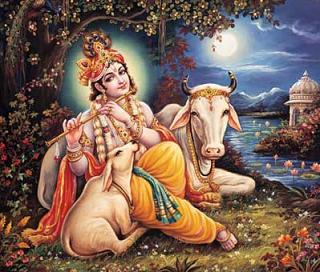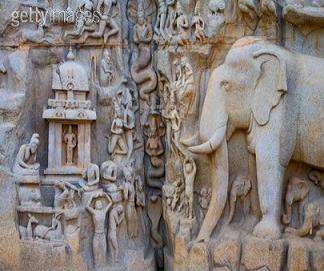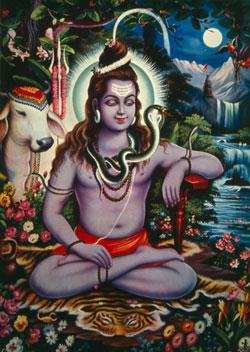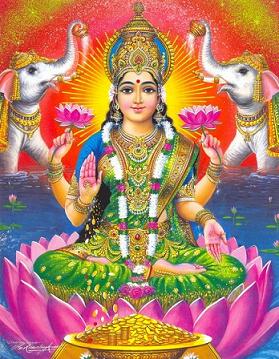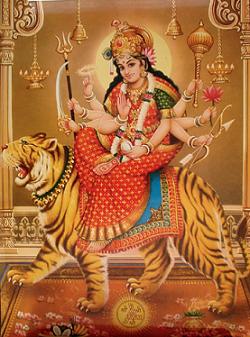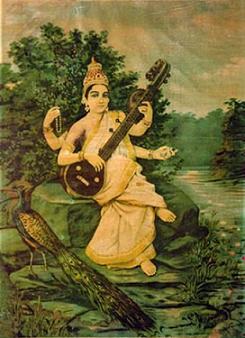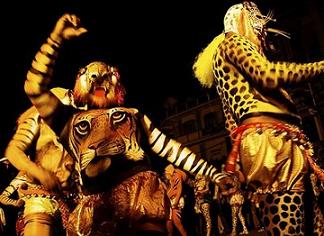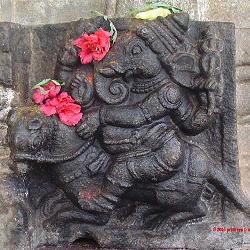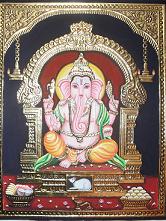Every civilization looks at animals, birds and sea creatures in its own special way. In India, generations over the millenniums have seen all species as their friends and partners with whom they share the earth. They have been presented in beautiful forms in paintings and sculptures as companions of deities, as symbols of power and beauty or simply as decorative embellishments…
“The Romans saw animals as fierce creatures which had to be killed or controlled for human survival. The Greeks saw them as symbols of power living in a separate world of their own. But ancient Indians saw them as they should be seen – friendly, loyal and graceful.” says Dr. Kumud Kanitkar, who has conducted an exhaustive study of animal sculptures and motifs in Indian culture, “Animals have not undergone any major changes in their shapes or bahaviour, but their perception by human beings has changed from age to age. The depictions of animals, birds and sea creatures in sculptures, paintings and arts like dance and fabric printing as well as architecture are expressions of human imagination and are often used as religious symbols of power, grace, beauty, dignity, opulence and wisdom.”
One of India’s fundamental fables of creation concerns the churning of the cosmic ocean by the gods on one side and demons on the other. The many sculptures or paintings of this event show that they used a gigantic snake named Anant – the cosmic serpent that entwines the whole world, to hold it together. This motif has fascinated the entire orient and is seen in huge sculptures in Thailand and Cambodia. In addition, the cosmic ocean yielded a divine elephant (Airawat), horse (Uchaisravas) and cow (Kapila) during the churning. All these attained the stature of being divine companions of the gods and thus were considered an integral part of the human as well as the spiritual world.
Later in the Puranic period, each deity represented one or more aspects of divinity and was thus accompanied by one or more animals to ‘complete’ the bonding of gods, humans and animals. Over a period of time, the Vahanas or vehicles of gods and goddesses came to represent their qualities or a means of instantly recognizing the deity which could be presented in different poses, forms or aspects. For instance, any goddess accompanied by a tiger or lion is instantly recognized as Durga. Archeologists have depended on animal sculptures to research sculptures of divinities as well as the historical period during which they were created. Animals and birds also became symbols of the duties and powers of gods and above all, they were the artistic expressions of the human perception of the animal world.
Most important, they proved that animals, birds and sea creatures were considered an integral part of the human universe as equal partners who shared the earth. Each animal, stylized according to the form of the deity with which it was teamed, became an instantly recognizable motif and was sometimes separately worshipped through dance, music, paintings and sculptures. Animals or birds also were considered protectors of shrines and human society.
Many Western writers like E M Forster have expressed wonder at the powerful presence of animals in Indian culture. His novel ‘Passage to India’ portrays animals as inspiring growth, promoting unity and love between animals and human beings and shown as exotic symbols of Indian culture. The use of these symbols proves the incomparable diversity of India’s forest landscapes and wealth. Hinduism worships many animal-related deities. The most popular among these are Ganesha with an elephant head and Hanuman, with a monkey body. Ganesha is the auspicious remover of obstacles, the god of wisdom and auspiciousness while Hanuman stands for strength, single-minded devotion and power.
Important western thinkers have wondered at the role elephants play in Indian culture. Apart from being a part of Ganesha’s personality, the elephant is invariably seen as the companion of Lakshmi, the goddess of wealth and opulence. Buddhists venerate the elephant as a symbol of the Buddha and thus this concept spreads across many oriental countries where Buddhism is practised. The elephant plays a cultural role beyond religion too. Researcher Heinrich Simmer says that elephants are so omnipresent in Indian art that they have come to symbolize India as a nation. Indeed, India has highest population of the Asiatic elephants – over 33,000 – or 60 per cent of all elephants in the world and the ‘elephant corridor’ from Kerala, Karnataka, Andhra to Orissa, Assam and then to Burma is a famous concept among wild life lovers. Indians rarely kill an elephant even if destroys crops because of their belief in its divine qualities.
Even today, in this age of hi-technology, owning an elephant is considered a symbol of wealth and opulence. Reportedly, the King of Thailand owns the largest number of ‘white elephants’ which are rare and considered lucky in India. Sculptures in Ajanta, Ellora and various schools of paintings including the Maithili, the Kantha, the Mughal miniature and even folk style Warli paintings feature elephants. Priceless textiles use the motif to celebrate good fortune.
Similarly, other animals and birds symbolize ideas and concepts. Some important symbols:
1. The lion or tiger, the companion of Durga, the goddess of power. They help her in destroying the demons of darkness and ensure the victory of good over evil every year during Navaratri.
2. Saraswati, the beautiful river goddess of knowledge and arts, is accompanied by swans or peacocks – both symbolizing grace and beauty.
3. Shiva, the lord of the Himalayas, rides the powerful Nandi or bull who symbolizes power and strength.
4. Krishna, the eternal lover, is a cowherd and attracts cows with his divine flute music. 5. Karthikeya, the son of Shiva-Parvati, has a peacock with him.
Apart from these major religious animal and bird symbols, Indians believe several birds and animals to be messengers of good luck. When a koel begins her song, romantic poetry is written to welcome the flowering of springtime. Her passionate cry heralds the much-awaited fragrant mango season. Parrots are used in literature as messengers of romance between lovers. Snakes are worshipped as holders of the earth’s treasures and symbols of fertility. The graceful swan represents the soul and its spiritual freedom.
Birds and animals in Indian culture are also harbingers of seasons – they foretell coming events and changing climate. They are also messengers between lovers. Just the koel sings for springtime, cranes and other birds flying among black clouds symbolize rain. The romantic Krishna himself is portrayed as the dark clouds which rain and bring plentitude on a parched, thirsty land. The swan is a messenger in the immortal love story of King Nala and the beautiful princess Damayanti. Parrots carry love messages between separated lovers. In all miniature paintings of India, birds and animals are presented as an integral part of the human world – as graceful, loving, loyal companions of human beings.
No wonder then that India has a huge treasure of wild life. The country is home to a huge number of monkeys of many species. The famous heritage Elephanta Island off the coast of Mumbai alone has more than 10,000 monkeys that live on the generosity of locals and visitors. India possibly has the highest number of wild life sanctuaries in the world – a total of 551 – spread over the sub-continent. Of these many are tiger habitats. Though declining due to poaching, the number of tigers in India is presently over 1400. The Asiatic lions in Gir, Gujarat are also a huge international attraction.
Indophile E.M.Forster says, "Indians believe that birds, animals and human beings – as indeed everything else – are an integral part of divinity. This is the central belief of all Indian religious and cultural thought and thus, all forms of life must be respected equally. Thus human beings and elephants, horses, cattle and birds like the mynah, the peacock, the parrot and the koel are woven into many fables and religious treatises. Water creatures like the crocodile, the turtle and fish are considered sacred and are associated with sacred rivers like the Ganga and Yamuna. India’s belief that animals, birds and sea creatures are sacred is a dominant and beautiful aspect of Indian culture for millenniums. They are earthly and spiritual companions of human beings and thus equal sharers of the world and its resources.”
According to Western thinkers, very few cultures are so deeply associated with animals, birds and sea creatures as well as trees like the Indian culture – which is a confluence of Hindu, Buddhist, Jain and Sikh thought. All these traditions recognize the right of all living beings to co-exist peacefully and to be loved and cherished for the welfare of the world. This is perhaps why animals are shown as companions of gods and goddesses. Famous kings and emperors of Indian history chose different animals in their emblems. Several festivals of India are observed to pamper animals. Possibly, to engender love for animals among all, animals have been made heroes in mythology and folk literature. Powerful rulers also encouraged artists at their courts to promote animal motifs in their art and architecture.
Unfortunately, today we have forgotten both India’s compassionate attitude and the alarm bells rung by present-day scientific research about animals. We continue to ignore the desperate need to conserve their habitats and their depleting populations. No wonder there is a sense of panic all over the world!
The author was Editor of Femina for 25 years. Vimla Patil is among India's senior most Journalists-Media persons. She excels in writing lifestyle pieces, women's concerns, travelogues, celebrity interviews, art-culture pieces about India. Visit her site www.vimlapatil.com
Also see:
• Lions of Sasan Gir
• Dance of the Peacocks
• Sacred Trees of the Hindus
• Eco religion of the Bishnois of Rajasthan
• Ganesha Global God
